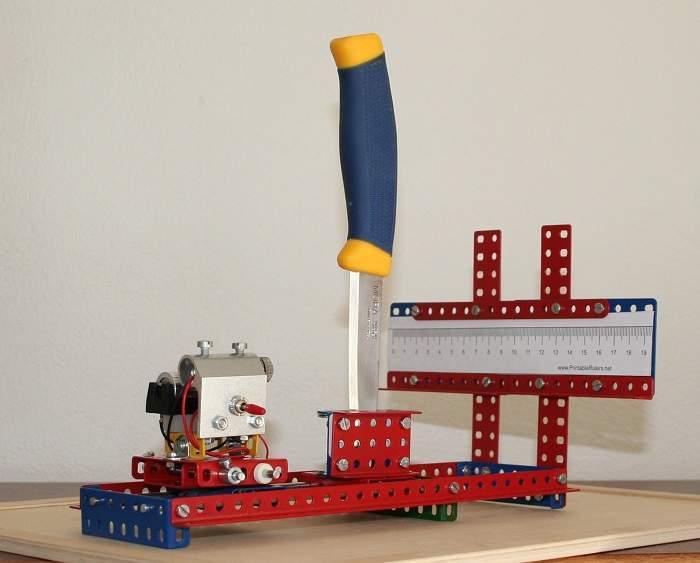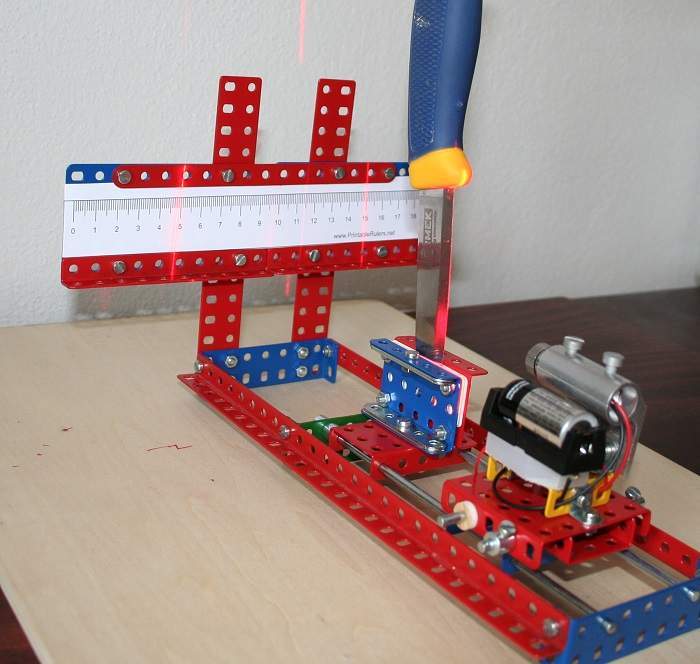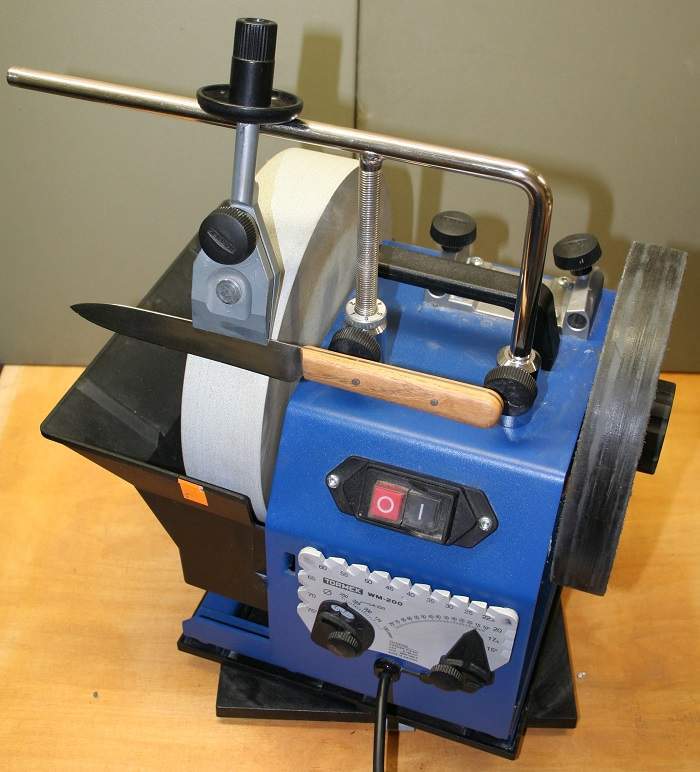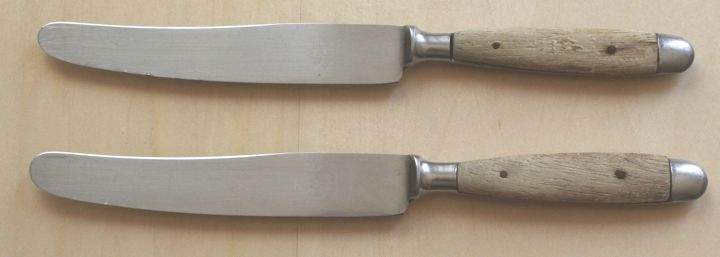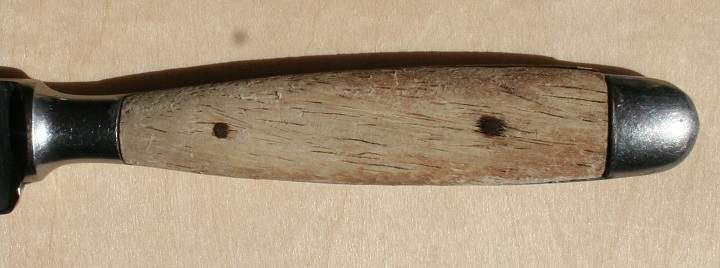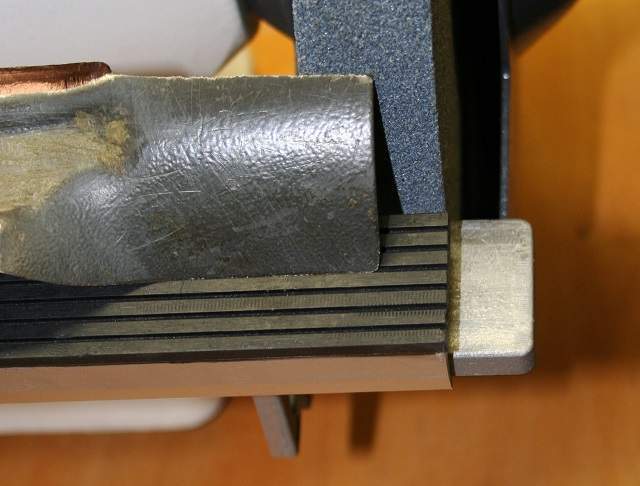My favourite angle setting tool for kitchen knives is kenjig with projection distance 139 mm. My standard bevel angle is 15 dps. The attached chart shows in red the change in distance from the grindstone to the top of the USB for the whole lifespan of the grindstone. It starts at a distance 78.9 mm for 250 mm diameter and ends at a distance 89.3 mm for a fully worn grindstone (180 mm).
My standard deburring procedure consist of honing at the leather honing wheel at an angle 16.5 dps. The chart shows in blue that for leather honing wheel LA-220 with 215 mm diameter the distance from the wheel to the top of the USB is 85.7 mm.
Because my computer is situated two floors above my shop this chart reduces my movement on the stairs between the basement and the second floor.
Jan
My standard deburring procedure consist of honing at the leather honing wheel at an angle 16.5 dps. The chart shows in blue that for leather honing wheel LA-220 with 215 mm diameter the distance from the wheel to the top of the USB is 85.7 mm.
Because my computer is situated two floors above my shop this chart reduces my movement on the stairs between the basement and the second floor.
Jan





